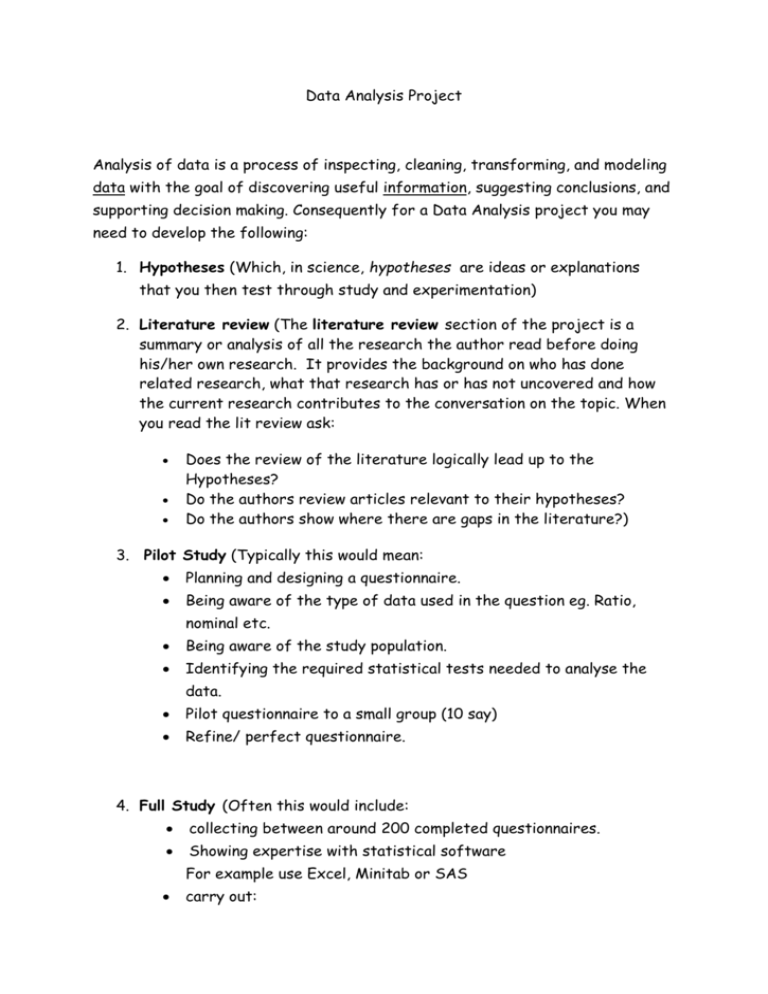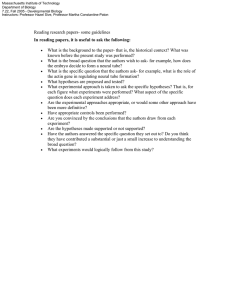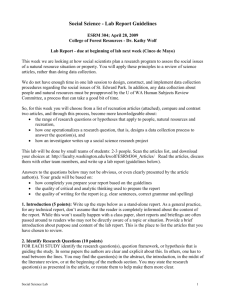Data Analysis Project Guidelines
advertisement

Data Analysis Project Analysis of data is a process of inspecting, cleaning, transforming, and modeling data with the goal of discovering useful information, suggesting conclusions, and supporting decision making. Consequently for a Data Analysis project you may need to develop the following: 1. Hypotheses (Which, in science, hypotheses are ideas or explanations that you then test through study and experimentation) 2. Literature review (The literature review section of the project is a summary or analysis of all the research the author read before doing his/her own research. It provides the background on who has done related research, what that research has or has not uncovered and how the current research contributes to the conversation on the topic. When you read the lit review ask: Does the review of the literature logically lead up to the Hypotheses? Do the authors review articles relevant to their hypotheses? Do the authors show where there are gaps in the literature?) 3. Pilot Study (Typically this would mean: Planning and designing a questionnaire. Being aware of the type of data used in the question eg. Ratio, nominal etc. Being aware of the study population. Identifying the required statistical tests needed to analyse the data. Pilot questionnaire to a small group (10 say) Refine/ perfect questionnaire. 4. Full Study (Often this would include: collecting between around 200 completed questionnaires. Showing expertise with statistical software For example use Excel, Minitab or SAS carry out: An exploratory analysis. Full analysis of the data. Interpret results 5. Research Methodology: Implementation (The methodology section or methods section tells you how the author(s) went about doing their research. It should let you know a) what method they used to gather data (survey, interviews, experiments, etc.), why they chose this method, and what the limitations are to this method. The methodology section should be detailed enough that another researcher could replicate the study described. When you read the methodology or methods section: What kind of research method did the authors use? Is it an appropriate method for the type of study they are conducting? How did the authors get their tests subjects? What criteria did they use? What are the contexts of the study that may have affected the results (e.g. environmental conditions, lab conditions, timing questions, is there any bias etc.) Is the sample size representative of the larger population (i.e., was it big enough?) Are the data collection instruments and procedures likely to have measured all the important characteristics with reasonable accuracy? Does the data analysis appear to have been done with care, and were appropriate statistical techniques used?











